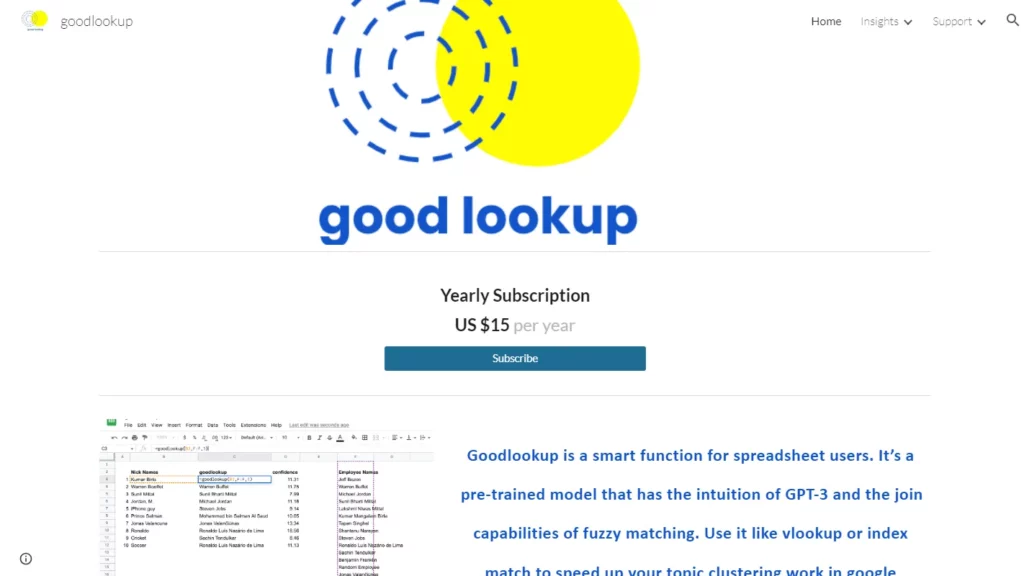Goodlookup is a smart function designed for spreadsheet users that combines the intuition of GPT-3 and the join capabilities of fuzzy matching. It is used to speed up topic clustering work in Google Sheets, similar to vlookup or index match. Goodlookup is particularly useful for modern spreadsheet users who face challenges with text-to-text record linking due to data living in multiple places without uniform naming conventions. It can match similar text in a way that mimics human understanding, including semantic relationships, synonyms, and cultural similarities between text strings. Goodlookup does not aim to replace fuzzy matching but rather offers a new tool for data operations. It can match strings like “Ronaldo” to “Ronaldo LuÃs Nazário de Lima” or “Soccer” or “Football,” and the score next to each match indicates the intensity of the neighboring words in the vector space, with longer strings matching identically to longer strings having the highest scores.
⚡Top 5 Goodlookup Features:
1. Smart Function for Spreadsheet Users: Goodlookup is a pre-trained model that has the intuition of GPT-3 and the join capabilities of fuzzy matching, allowing users to speed up their topic clustering work in Google Sheets.
2. Semantic Understanding: Goodlookup gets very close to semantic understanding, which is crucial for topic clustering, as it requires semantic understanding.
3. Text-to-Text Record Linking: Goodlookup helps users solve text-to-text record linking problems, which are common in modern spreadsheet users with data in multiple places without uniform naming conventions.
4. Human-like Matching: Goodlookup can match similar text the way a human would, making it a powerful tool for data operations.
5. Synonym and Cultural Similarity Matching: Goodlookup can match semantic relationships, synonyms, and even cultural similarities between text strings, providing a more comprehensive matching experience.
⚡Top 5 Goodlookup Use Cases:
1. Data Cleaning: Goodlookup can handle errors and inaccuracies in data, making it useful for data cleaning tasks.
2. Record Linkage: Goodlookup can match records that contain the same information, even if the format is not exactly the same, which is beneficial for record linkage.
3. Named Entity Recognition: Goodlookup can use Named Entity Recognition (NER) to identify and extract specific information from the data, such as names, dates, and locations, which can improve the accuracy of fuzzy matching.
4. Data Operations: Goodlookup can be used as a new tool for data operations, providing a more sophisticated understanding of the language used in the data.
5. Topic Clustering: Goodlookup can speed up topic clustering work in Google Sheets, making it a valuable tool for data analysis and organization.














